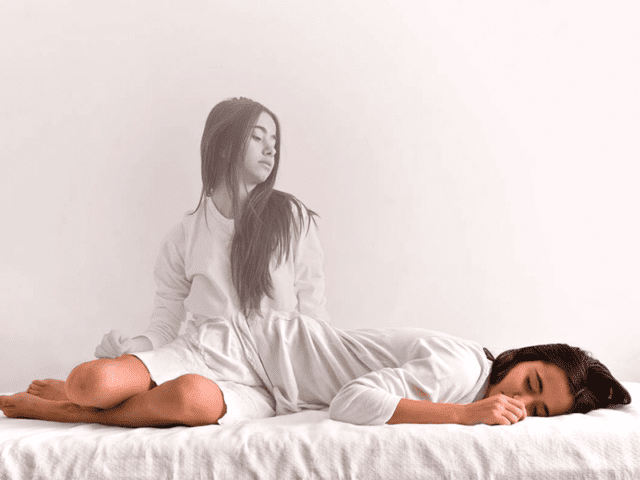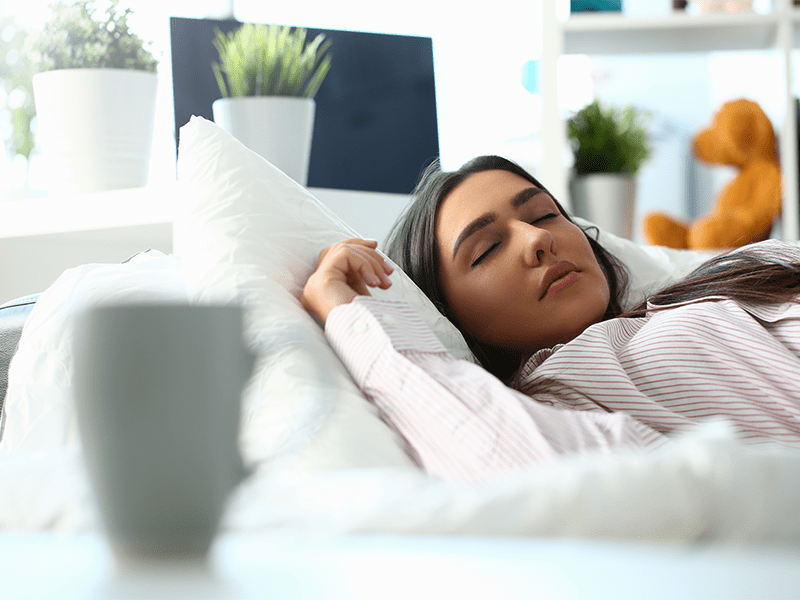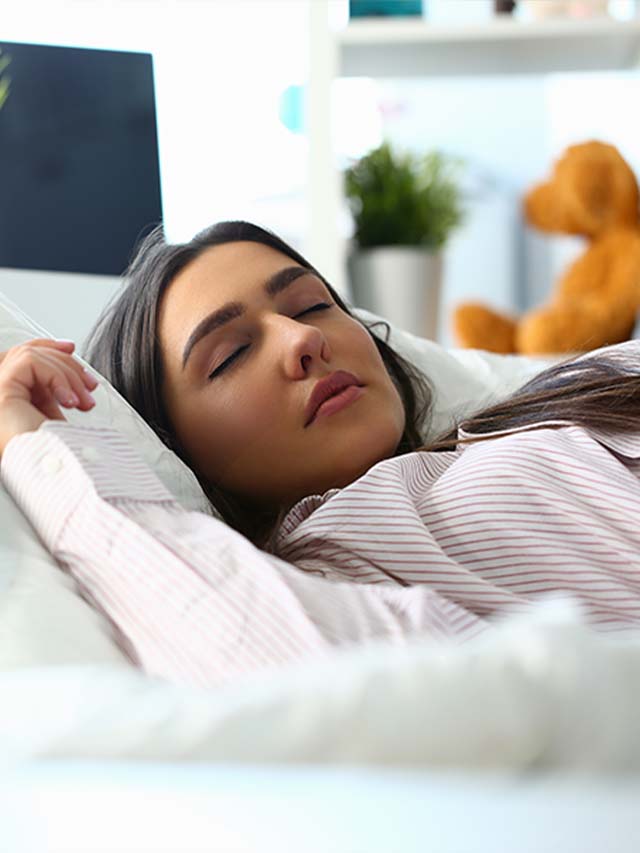The Dalai Lama has said that “sleep is the best meditation”. There are immense mental, spiritual and health benefits of having a good night’s sleep. What entails quality sleep is a combination of various factors, the most important of them being the sleep posture. Our sleeping poses have a strong influence on our quality of sleep. Unfortunately, very few people have knowledge about the correct sleeping posture and end up with back or neck problems owing to the lack of it.
Sleep has a very crucial role to play when it comes to our productivity, moods, energy levels, mental state and overall health. In fact, people who get less than eight hours of good quality sleep are prone to issues like obesity, diabetes, depression, fatigue and lack of libido to name a few. Awareness about the various sleeping positions and their impact on health can help a lot of people improve their quality to sleep and overall health.
What Is Sleep Apnea?

Sleep apnea is a disorder that causes a person to have abnormal breathing patterns while sleeping. The person could experience shallow breathing or have short pauses in their breathing activity. In most cases, there is loud snoring after these bouts. Sleep apnea is a major cause of fatigue and lowered productivity as it affects the quality of sleep.
How Serious Is Sleep Paralysis?

Sleep paralysis is a non-threatening condition that causes people to experience pressure or choking. This happens either while going off to sleep or immediately after waking up. Such people find it impossible to move even though the senses and reflexes are fully functional. This condition is a result of the fact that during this short span of time, the brain is fully functional while the body is still in sleeping mode. Although sleep paralysis is not a serious problem, there are medications available for chronic cases of this disorder.
5 Most Common Sleeping Positions & Their Effects On The Body
1. Sleeping On Your Stomach
A large number of people are habituated to sleeping on their stomach, with their head on either side in order to help them breathe. The arms are either on the side or tucked beneath the pillow. The legs are straight on the bed. This position has the reputation of being the worst sleeping position. Its advantages are grossly outweighed by the disadvantages.
Pros
- Helps in easing snoring
- Might assist with sleep apnea
Cons
- Leads to back and neck pain since the back is not in a neutral position
- Can cause excessive pressure on the joints and muscles causing pain and numbness
- Breathing can become difficult as the bodyweight affects lung function
- Leads to neck pain
Best Suited For:
- People who snore
- People with sleep apnea
2. Sleeping On Your Side
This category includes the people who sleep on their right or left side. Which side to sleep on has been a never-ending debate. Sleeping on either side has its own advantages and challenges. However, since people keep changing sleeping positions while asleep, categorising them into the right side and left side sleepers is challenging. Such people sleep on either side of their body, with their legs straight. The following features can help one decide which side to sleep on.
Pros
- Sleeping on the left side increases blood circulation to the heart (This is the best sleeping position for pregnant women)
- Sleeping on the left side provides relief from acidity, acid reflux and heartburn
- Best sleeping position for digestion
- Sleeping on the side reduces the pressure on the back
- Best sleeping position for lower back pain
- Sleeping on the side helps with sleep apnea
Cons
- Sleeping on the side causes excessive pressure on the nerves of the arms and legs on that side of the body
- Causes numbness of the arm
- Restricts blood flow on one side of the body
- Sleeping on the left side can cause the lung to shift towards the heart, affecting heart function
- Sleeping on the right side causes shifting of the lungs and can lead to breathing troubles
Best Suited For:
- People with acid reflux, heartburn or acidity
- People with sleep apnea
- People suffering from back pain
- Pregnant women
3. Sleeping In A Fetal Position
Also known as the baby position, this position is when a person sleeps on one side, with their knees curled up and back hunched. Such poses are the best way to sleep for pregnant women. Interestingly, this position also closely resembles the position of a baby in the mother’s womb.
Pros
- This position is a welcome change from the straight position we spend the entire day in
- It helps a protect the liver of a pregnant woman from the pressure from the uterus
- Can help reduce snoring
- Sleeping on the left side makes it the best sleeping position for digestion
Cons
- If the legs are curled up tightly, it can result in excessive pressure on the diaphragm and cause breathing trouble
- There are chances of added stress on the spine
- Can lead to poor blood circulation
- Can cause additional strain on the hips
- Not recommended for people suffering from arthritis or spinal problems
Best Suited For:
- Pregnant women
- People who snore
4. Sleeping In An Upright Position
This position refers to the people who have their heads elevated while they sleep. The degree of elevation in these sleeping poses is usually between 20% to 30%. This can be achieved in various ways, some common techniques are using recliners, special pillows, mattresses or custom made beds.
Pros
- The raised level of the head helps people who snore
- An appropriate degree of elevation can make it the best sleeping position for neck pain
- Helps clear the nasal passage and is suitable for nasal and throat allergies
- It helps with sleep apnea
Cons
- Since it is not the most comfortable position, one might not have quality sleep
- It is impossible to change sleeping positions while sleeping
Best Suited For:
- People suffering from sleep apnea or breathing problems
- People who snore
- People with neck pain
5. Sleeping On Your Back
Sleeping on your back is probably the most ideal of all the sleeping positions. It has a series of benefits. Sadly, it is estimated that only 9-10% of the world population sleeps on their backs. This position requires the person to sleep with their limbs straight and hands on the sides. The head faces the ceiling. This is the best way to sleep for most people.
Pros
- This is a neutral position for the neck, limbs and spine so there is no pressure
- It is the best sleeping position for lower back pain
- The mattress provides good support to the spine
- There is no obstruction to the face which helps easy breathing
- Helps in battling acidity, heartburn and acid reflux
- Prevents wrinkles on the face
- It is one of the best sleeping position for neck pain
- Reduces chances of Sudden Infant Death Syndrome (SIDS)
Cons
- Dangerous for people with sleep apnea or breathing difficulties
- Makes snoring worse
Best Suited For:
- People with no breathing problems
- Infants
Why Do You Wake Up Feeling Like You’re Falling?
Ever have this feeling when you wake up with a jolt because you thought you were falling? One of the many theories on this subject is that your brain misinterprets the relaxation of the muscles, dropping of body temperature and lowering of the heart rate as a sign of falling and makes an attempt to protect you from the fall.
Although some sleeping positions are more beneficial than the others, picking the best sleeping position is very relative. Correct sleeping posture can be determined by analysing the health of the individual and the challenges they face in getting a good night’s sleep. Apart from the position, other external factors which can significantly improve the quality of sleep are a firm mattress (a firmness scale of 5-7 suits all the sleeping positions), a good-sized bed and a high-quality pillow.
The position in which you sleep can have a great impact on how you sleep. An individual can be well-rested only if their sleeping position is correct and conducive to his overall health. The most immediate effect of a bad sleeping position is back or/and neck pain. The sleeping poses also influence other factors like sleep apnea, snoring and respiratory function. A bad sleeping position amounts to reduced or disturbed sleep which influences the overall performance of the body. Lack of sleep causes headaches which affects productivity. Finding and sticking to the best sleeping position can benefit an individual immensely.


